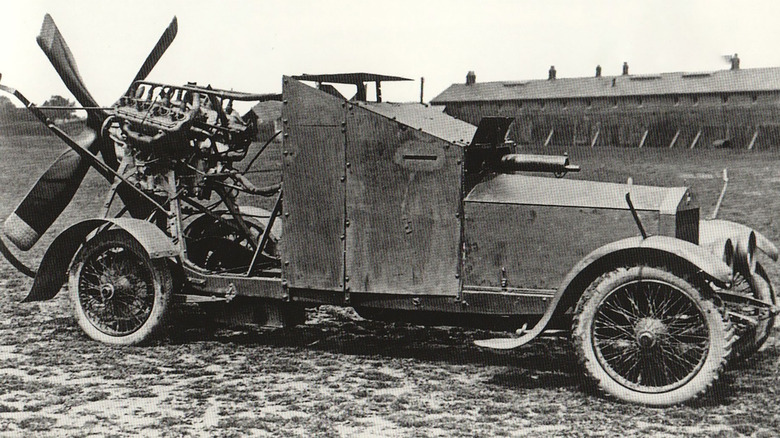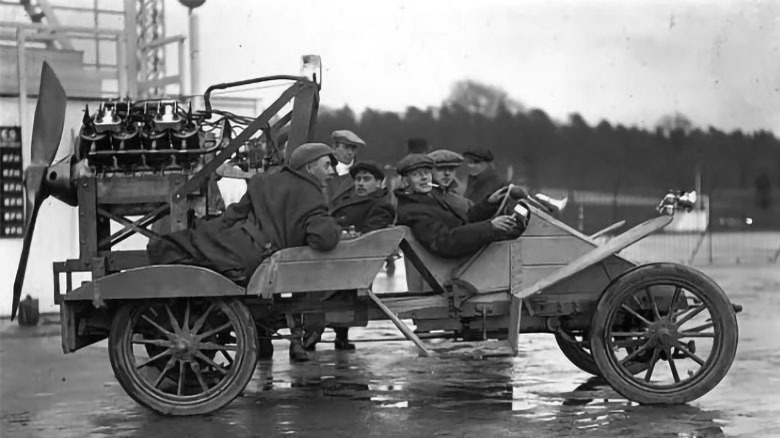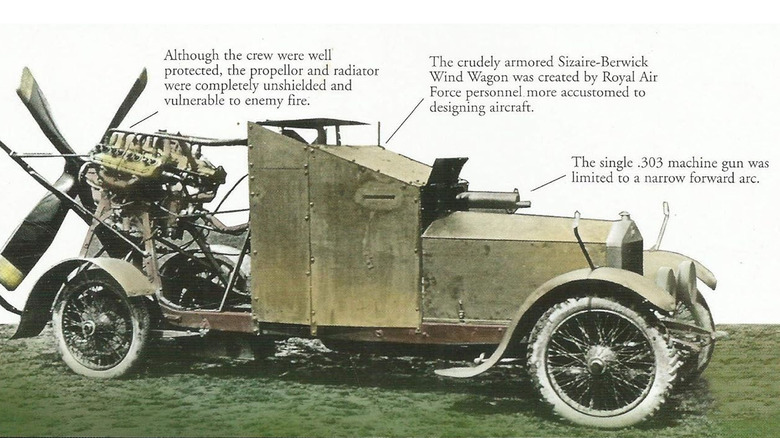The Strange Propeller Car Of WWI: The Story Behind Sizaire-Berwick's Armored Car
Of all the various technological creations born from World War 1, perhaps no other vehicle was as odd or useless as the Sizaire-Berwick Armored Car, also known as the "Wind Wagon." While the Great War saw a lot of devastating technology developed during the era, other inventions were not as effective and never actually left the prototype phase.
The Sizaire-Berwick Armored Car is one such invention. A civilian chassis with a giant airplane propellor and engine attached to it, the vehicle was meant to overcome the obstacles that desert warfare in North Africa and The Middle East presented to France and England at the start of the war. However, the company creating the vehicle, Sizaire-Berwick, was not known for armored vehicles, instead producing luxury sedans from 1913-1927.
Founded originally by Maurice and Georges Sizaire in 1903 as Sizaire-Naudin, the brothers would leave their original company and partner with William Berwick, a London U.K. car importer, to launch the Sizaire-Berwick company in 1913. However, just a few years later, WWI would officially begin, and the company's production sites were commandeered for military use.
What was the Sizaire-Berwick's Armored Car?
The Sizaire-Berwick's Armored Car was an Anglo-French lightly armored military vehicle that was originally designed for combat in arid desert regions during the start of World War 1. Comprised of a civilian car body and outfitted with a giant plane propeller on the back, the Sizire-Berwick Armored Car was meant to glide over sandy terrain.
By 1914, the Sizaire-Berwick company was already well known for producing high-quality six-cylinder engine cars for consumers in France and the U.K. However, in 1915, The Royal Naval Air Service took over the Sizaire-Berwick manufacturing plant in Courbevoie, France, and the last few car chassis were delivered to the coast to aid war efforts. Because of their need for a desert vehicle, The Royal Navy sought a design solution and placed a Sunbeam 110CV plane engine on the back of the chassis while adding some steel-plated armor on the front of the vehicle to protect the car's operators.
The thought was that the added plane engine could help propel the vehicle over the loose sands of the desert. However, rather unsurprisingly, because the chassis for the vehicle was not designed or graded for military use, there were many problems with the Sizaire-Berwick's Armored Wind Wagon, and the vehicle was never used in a real operation.
The Sizaire-Berwick's Armored Car was a horrible combat vehicle
There was a lot wrong with the Sizaire-Berwick Wind Wagon beyond its absurd design; most importantly, Sizaire-Berwick cars were never meant to equip a plane engine and were not designed for combat. As one would expect, the chassis was as frail as the luxury cars they were used for, with critical components sitting in the front and a large exposed plane engine in the back. Though the steel armor outfitted to the front of the vehicle provided some added protection, it also reduced driver visibility by covering nearly the entire windshield.
Lastly, the wheels on the vehicle were designed to be driven on the roads of the U.K. and France, not the deep sandy deserts of the Middle East or North Africa. While unconfirmed because the vehicle never saw action, the additional weight of the plane engine and armor would likely cause the vehicle to be less effective in the sand, if effective at all.
While the Wind Wagon was an abject failure, it didn't mean all consumer cars altered for military use were. Notably, Model T cars produced by the Ford company were used across the WWI campaign due to their low cost and ease of repair. Unsurprisingly, those cars were used for the much more sensible task of infantry and medical transportation — a much more realistic goal than gliding over the sand with a plane engine attached to a luxury car.


